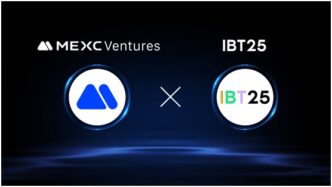In higher education, there is a growing recognition of the need for a more integrated approach to credential verification and evaluation. According to Professor Vipin Gupta, Professor and Co-director, Center for Global Management, the Jack H. Brown College of Business and Public Administration, California State University San Bernardino, “traditionally, credential verification in the universities has been largely limited to verification of international transcripts. Credential evaluation is a disintegrated process of separately evaluating the transcripts of formal education and learning plus employer letters on work as a proxy for informal education and learning. Due to the challenges in evaluating informal education and learning, the underserved and at-risk applicants are often excluded entirely or included without the merit-based scholarships and financial aid for which they may otherwise be eligible if their credentials were evaluated in a holistic way.”
Recently, in a report “Connected Impact,” American Council of Education (ACE) underscored the importance of higher education institutions embracing blockchain for credential verification and evaluation. An integrated approach that gives the applicants control over their data and improves transparency is essential for seamless education-employment-education transitions. As ACE notes, with a potential for granular evaluation of skills, blockchain “provides the technological fabric to help displaced workers translate their skills for new education opportunities and employers.”
Professor Gupta observes, “for strengthening democracies around the world, the universities must democratize student credentials. Students must have access to the data used for evaluating their credentials, including the formalized evaluations of their non-academic experiences, to inform admission, financial aid, internship, and employment decisions. The data must remain usable by the students over their entire lifecycle as a ledger of their verified human capital record.”
As ACE notes. “With so many students, workers, colleges and universities, employers, and other stakeholders seeking to document, verify, and share evidence of learning, it is easy to see how blockchain’s unique attributes of a tamper proof, shared ledger could optimize human capital and promote competitiveness and social mobility.”
Here is how Professor Gupta explains blockchain: “Blockchain is a distributed ledger technology that groups credentials into blocks, cryptographically linked after validation to a successive block that authenticates the validity. Each successive block signifies a decision by someone to consider the candidate as qualified for that subsequent formal education or employment experience based on the prior blocks. Once a new block is added, the prior blocks can’t be tampered. Thus, blockchain creates a trusted depository of credentials, including credit-bearing degrees and certificates. as well as non-credit-bearing digital badges, apprenticeships, and employment records.”
He identifies eleven improvements unlocked by blockchain in the credential verification and evaluation domain:
- Speed by eliminating long processing times. It accelerates the time from student (and potential employees) applying to the educational institutions making the decision
- Accuracy in decisions by eliminating errors in converting grades from the diverse alternative grading systems, thus ensuring 100% compliance with the institutional policies, regulations, and accreditation requirements
- Productivity by eliminating employee time and effort in extracting and manually converting grades and checking different systems of grade conversion for eliminating errors in disqualifying otherwise qualified applicants.
- Efficiency by eliminating the costs of manually managing transcript and employment verification and evaluation
- Touchless straight-through processing through integration with student application and admission systems
- Fraud prevention by automating the process of credential verification directly from the authorized representative of the institution awarding each credential
- Auditability by making the credential conversion rules transparent for everyone, including the students or the potential employees, academic programs or the hiring departments, and admission and financial aid officials or the hiring committees
- Communication among the educational institutions, students or potential employees, and employers verifying the credentials or using pre-verified credentials for their decisions.
- Security by ensuring that all data remains in electronic format in cloud and is accessible to only those who are authorized to access the data or the part of the data
- Sustainability by eliminating paper trails and need for submitting paper credentials with verifications by the notaries or the issuing institutions
- Student yield with superior customer service and experience and agile decisions related to hiring or admissions, including financial aid and scholarships, beating the competition
Professor Gupta concludes that “the blockchain offers not only the benefits of personal agency, lifelong learning, and connected ecosystems, but also institutional effectiveness. It has the potential to make the institutions more effective in recruiting students, especially at-risk students, using cost-effective, responsible, and auditable systems.”
“The key for any higher educational institution is how to make the potential real.” By creating a blockchain-based system for credential verification and evaluation, the firms like VeriOnce are unlocking the path to do so.












